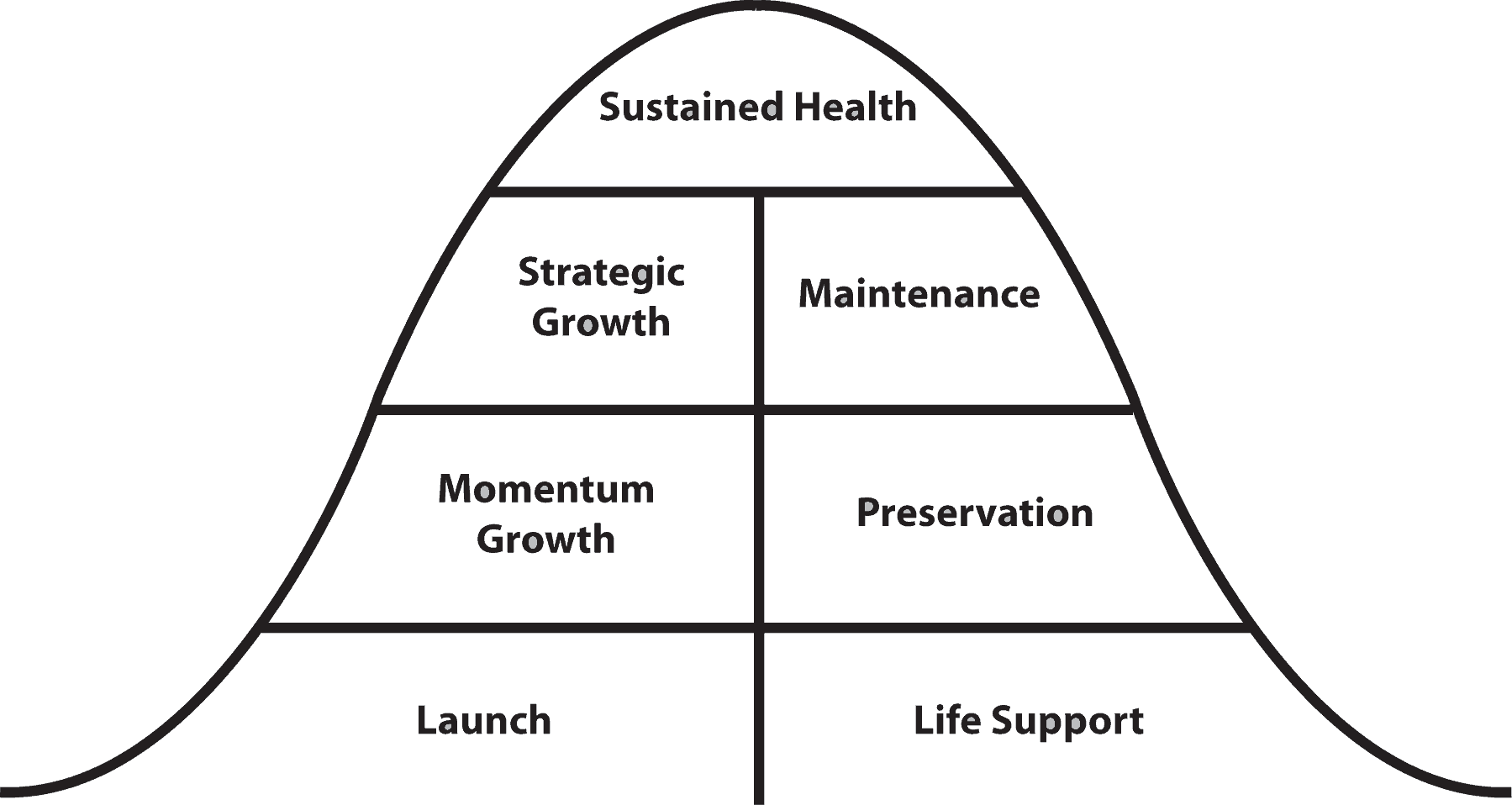Wondering if your church is stuck here? Here are some of the characteristics of churches in the preservation phase:
The preservation phase is a challenging season for churches:
The signs of decline and lack of health become obvious, but the pain typically isn’t bad enough to foster a desire for change.
Wondering if your church is stuck here? Here are some of the characteristics of churches in the preservation phase:

6 Signals a Church Must Change to Survive
1) Attendance and finances are both declining.
The attendance drop is noticeable. Not only are new guests not keeping pace with the natural turnover, but people are starting to leave specifically to attend other churches. As people leave, so does their giving.
2) Methods have become more important than the mission.
This is when the real worship wars occur because people prioritize their own stylistic preferences above those the church is trying to reach. People dig in their heels regarding service times, Sunday school classes, programs, and events that have been around for years. Turf wars become the norm as ministries stake their claims on budget, space, staff, volunteers, and other resources.
3) There’s a prevailing pull to go back to the way things used to be.
This pull gets stronger as newer people leave for other churches and the number of people connected to the church declines. The people who have been around the longest also have more staying power, and their voices become louder.
4) The strong leaders and visionaries have left the church.
I say this in the past tense because they probably actually have been gone for some time. It doesn’t take long for good leaders to realize that the church is not moving forward.
5) Power shifts from the pastor and staff to the lay leadership.
By this point, it’s not uncommon for a church to have experienced transitions in pastoral and staff leadership. During those transition seasons, the remaining lay leaders will often try to take back control. They’ll shift power and decision making from the staff to boards and committees.
6) The focus shifts to keeping people from leaving.
Whereas the churches on the upside of the life cycle are focused on reaching new people, the churches in preservation mode are just trying to keep the people they have. That’s a defensive posture, and it won’t help the church return to sustained health.
If you recognize these signals in your church, it’s going to require some critical shifts to help the ministry return to health and growth. My thoughts on the most important step in this short clip:
Here’s the good news: It’s possible to transition churches out of this preservation phase. It doesn’t happen often, but it can work. In the book, I share some real churches’ stories and practical steps you can take if you find yourself here. I hope you’ll pray for God’s direction and engage the challenge as He leads.
Consider taking the Unstuck Church Assessment to discover where your church sits in its life cycle and the practical next steps you can take to reach sustained health:
Read the first two articles of the series here:









Leave a Reply